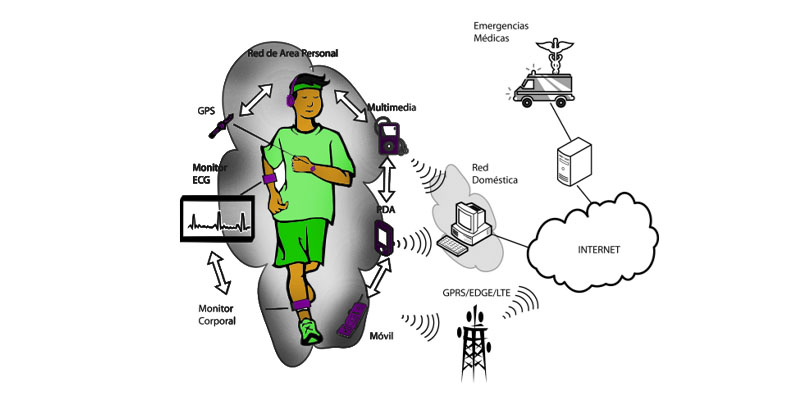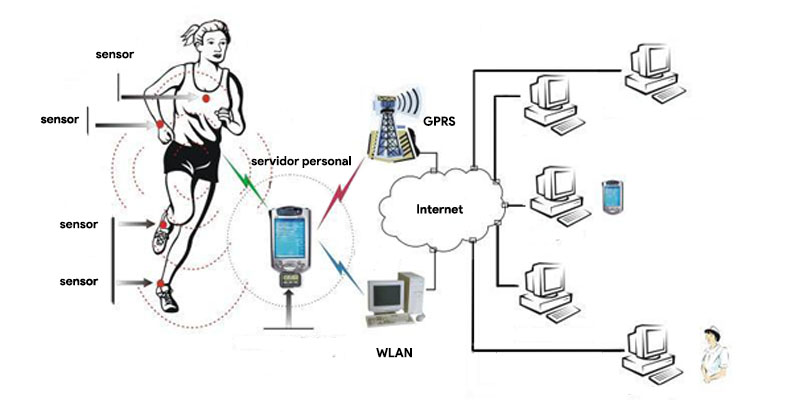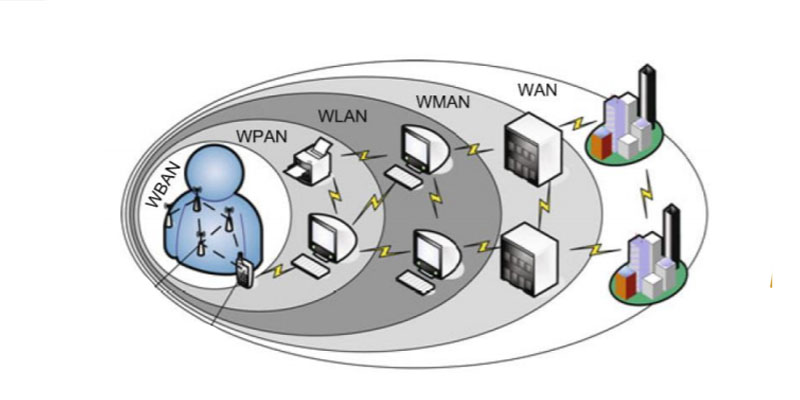
UPDATED ✅ Do you need to know the definition of BAN network and you don’t know what it is? ⭐ ENTER HERE ⭐ and discover everything you need to know about it ✅ EASY and FAST ✅
Technology continues to evolve and, despite the fact that the concept that we are going to see today has been used for quite some time, the truth is that it is a point to be developed, with much to offer and that we can squeeze in a multitude of areas of our lives: body area networks.
You sure know about WLANs, right? Maybe the WMANs too, but Do you know what WBANs are? Calm down, it’s normal. These are not the main topic of conversation in the bakery and, in fact, their incipient development means that they are not either, not even in the contexts in which computers and technology make an appearance.
Of course, if you are curious you should know that you have come to the right place because, in effect, we are going to be the ones who tell you what a body area network is, what it is for and how it is formed.
What is a Corporal Area Network and what is it for in computing?

The devices that use this are headphones, viewers, microphones, smart watches, smartphones, glasses, nanobots, telematic bracelets… They also use BAN those that are implanted and used for medical purposes such as hearing aids, valves, or pacemakers.
Uniting several of these forms a system that allows information to pass from one to another and also to external platforms. that can be consulted from, also, outside the system. The storage has to be remote so that the devices are small and light.
As you can imagine, this type of network is quite current. In fact, it is something that is still timidly developing and has a long way to go.
Although we can see it in various sectors. In addition to the toilet, which is the main one and the one that could benefit the most, let’s enjoy it in consumer electronics, in entertainment, in the workplace, in sports, in improving person-person or person-machine communication and beyond.
At the moment, you are they use standards that we already know such as WiFi or Bluetooth, but the ideal is that can be interconnected with other types of networks like WLANs, WPANs.
Components of a BAN network What is needed to create one?

Depending on the type of functionalities to enjoy, obviously, the devices and their possibilities will be diverse.but that is something that already goes hand in hand, as we say, with what we want to achieve.
Let’s take an example: A runner wears a smart watch that measures his heart rate and other biometric parameters. When it considers, it tells you where the nearest source is. This will require a biometric sensor, a GPS, a database that indicates which parameters are “normal”, an action to consult this…
On the other hand, we can see the case of the bracelets worn by people who have been released from prison. These beep when the user exceeds a distance X from a point and a warning is given.
The bracelet will need to be geolocated, a proximity sensor, an element capable of sending a signal, a device that receives the perimeter exceeded alert, a sound element that is activated when said signal is sent or when you are close to passing the stipulated distance, etc.
Indeed, some systems are totally different from others, and so we could continue dismembering each one of them. What we want you to understand is that the elements that make up body area networks differ as much as their goals.
A) Yes, we stay with:
- An element or platform that manages information.
- A communicative standard.
- Elements or devices with the capabilities we want to achieve.
What types of computer networks exist?

- WANs or Wide Area Networks. Its coverage is practically global, thousands of kilometers. With a few we provide connection to the entire planet. They use Cellular Digital Packet Data technology, which allows data transmission by mobile phone.
The protocol par excellence for this type of connection is the famous WAP, a standard that does not limit devices, regardless of aspects such as their operating systems. We also use satellite communication to access areas that are more difficult to communicate with by other means.
- MAN networks or metropolitan area networks. Their range is hundreds of kilometers, which means that they are the ones chosen by the operators to cover coverage areas of their Internet connection services.
They work with the standard WiMAXwhose transmission speed is 75 Mpbs with frequencies that can reach 66 GHz, which means that an effective multipoint architecture design can be given.
- LANs or local area networks. Of lower rank, they are of great interest because the bands they use do not have a license, which means that anyone can use them assuming a minimum investment to do so.
Are the ones that ordinary users use to connect to the network, both by cable and by connecting wirelessly (in this case they would be WLAN). We do connecting to a coverage point keeping us at a certain distance from him while he interconnects with others (including servers, antennas and other devices) distributed throughout the area covered.
- PAN networks or personal area networks. Still in development like the ones we are dealing with today, the PAN networks are born for which user and network come closer and form part of the same system, seeking the integration of services close to it and, therefore, automation, as far as possible and the environment.
To do this, the devices that the user uses can communicate with each other (laptop, smartphone, digital camera, PDA, surveillance systems.
we would talk about a system that gravitates about 10 meters around the user and that work without the need for your body to be part of the process communicative.
- BAN networks or personal area networks. They would be the ones that cover less area or space, that is, the ones that work at shorter range. We have already seen that the system is composed of body worn devices of the user so the range of action is minimalof a few meters at most (except for sending information, which would be done by combining it with other types of networks) and always considering the body of the person as transmission element of information.
Regarding the types of local area networks, we have the WBANs and the Wi-Fi. The difference between the two is that the latter would be wirelesshence its name, “Wireless Body Area Network”.
A) Yes, one would use wiring to be functional, as is the case with local area networks, when we connect our computer to the router via Ethernet cable. The other, as we say, would work without cables, using a wireless standard. Obviously, this last option is the one that makes sense in body scope systems.
Finally, indicate that we can also consider the existence of other types of networks, although these would be more specific like VLANs, CANs and so on. We can treat them all in another post in which we would see, one by one and in detail, all the existing ones.
networks